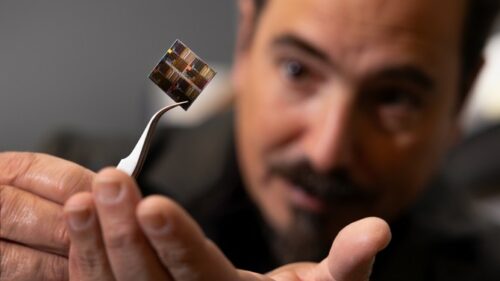Researchers have developed microrobots capable of imaging and measuring forces at a scale once unimaginable, heralding advancements in microscopy and biomedical research.

Cornell University (CU), USA scientists have engineered the world’s smallest walking robots, capable of navigating the nanoscale world to perform imaging and force measurements. Developed by a team of physicists and engineers, these microrobots, as small as 2μm, bring a difference in robotics and optics integration.
Paul McEuen, professor emeritus, CU, emphasised the innovation’s significance: “A walking robot that’s small enough to interact with and shape light effectively takes a microscope’s lens and puts it directly into the microworld.” By harnessing visible light diffraction, these robots can conduct imaging tasks unattainable with traditional microscopes.
The research was led by McEuen and co-authored by Conrad Smart and Tanner Pearson, researcher and PhD students, CU among others. Prior to this, the university held the record for the smallest walking robot (40μm–70μm); this new design has shattered that record with its unprecedented size and capabilities.
These microrobots operate using a magnetic pinching motion that allows them to walk across surfaces or swim through fluids. The team achieved this by incorporating nanometer-scale magnets, an approach inspired by Jizhai Cui, physicist, Fudan University. Such versatility makes the robots particularly appealing to biomedical researchers, optical engineers, and nanotechnology experts, who could employ them for tasks like DNA analysis, cellular imaging, or even microsurgical procedures.
In addition to mobility, the robots serve as optical tools. Their diffractive elements are designed to interact with light wavelengths, enabling them to act as a lens or diffraction grating. “The miniaturisation of robotics has finally reached a point where these systems can actively shape light at scales a million times smaller than a meter,” said Francesco Monticone, co-author and associate professor of electrical engineering.
Beyond imaging, the robots can measure mechanical forces by responding to pressure through their spring-like compliance. Potential applications range from DNA structure studies to clinical diagnostics, hinting at transformative possibilities in both research and medical fields.
“This is just the beginning of what’s possible with microscale robotics,” Monticone remarked, envisioning swarms of robots conducting advanced microscopy tasks in unison.






